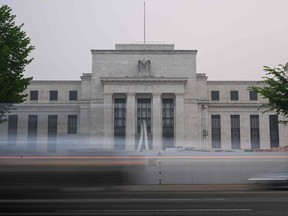Central banks are on the cusp of a significant change in their tactics. While interest rates may still rise slightly, it appears that we are nearing the end of the hiking cycle. The focus is now shifting towards maintaining these high levels for an extended period.
The Case for Higher For Longer
However, policymakers must justify the need for ‘higher for longer’ interest rates. This requires a clear and coherent narrative that links their previous plan with the new one. Central banks have been in risk-management mode, raising rates above what is necessary given the most likely path of inflation. These ‘insurance hikes’ provide some protection against the risk that inflation proves highly persistent.
The Risks of Over- or Under-Delivery
Conversely, an extended hold looks less plausible if central banks have over-delivered and rates have been set above the level warranted by the current inflation outlook. If investors believe rates are too high to begin with, then it should take very little news that inflation is falling, or unemployment is rising indeed, to trigger expectations of multiple cuts.
On balance, it seems more likely that policymakers have over- rather than under-delivered. Many if not most policymakers appear to have been in risk-management mode, raising rates above what looks necessary given the most likely path of inflation.
The Need for Clear Communication
If central banks do pivot from hike to hold, then they will need to give clear and credible communication if they want to anchor rate expectations on an extended hold. Above all, central banks need a coherent narrative that links the old plan with the new one. It is hard to explain how you are in risk-management mode one day and committed to an extended hold the next.
The Consequences of an Extended Hold
An extended hold starts to look more plausible if central banks have under-delivered and failed to complete the hiking cycle. However, it should not take much upside news to trigger expectations of multiple hikes if rates are set too low today. Conversely, an extended hold looks less plausible if central banks have over-delivered and rates have been set above the level warranted by the current inflation outlook.
The Reversal of Policy
We know monetary policy is persistent in practice. Reversals are unusual: hikes rarely follow soon after cuts. Policymakers may choose to wait until they are confident that the first cut of the coming easing cycle will not be reversed before they act. But that means waiting until there is enough news to justify multiple cuts before delivering the first.
The Bottom Line
Central banks must justify the need for ‘higher for longer’ interest rates by providing clear and credible communication. They need a coherent narrative that links their previous plan with the new one. It appears more likely that policymakers have over- rather than under-delivered, raising rates above what is necessary given the most likely path of inflation.
Recommended from Editorial:
- Growing wages may force BoC to raise rates again
- Renewable energy stocks hit hard by higher rates
- Brace for mortgage payment shock amid higher-for-longer rates




